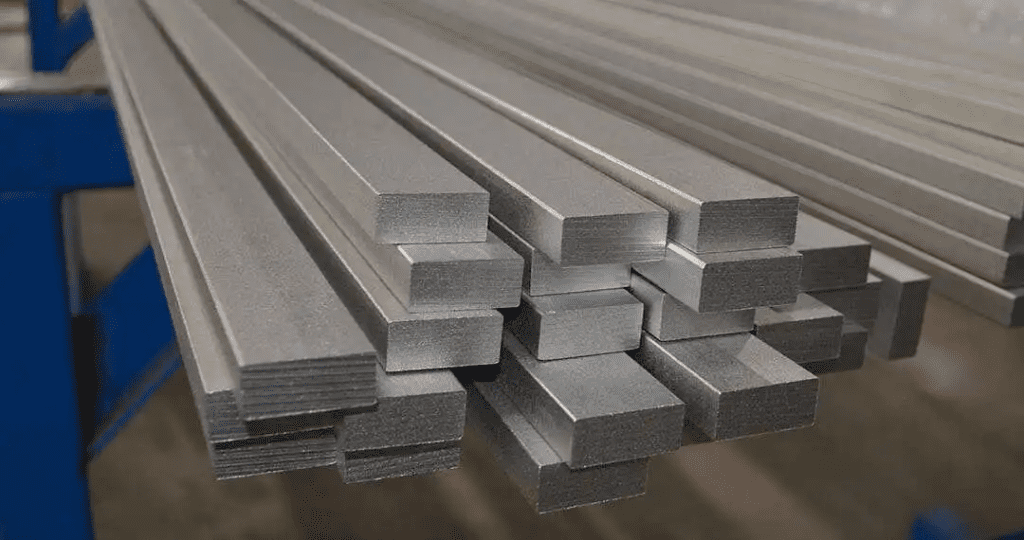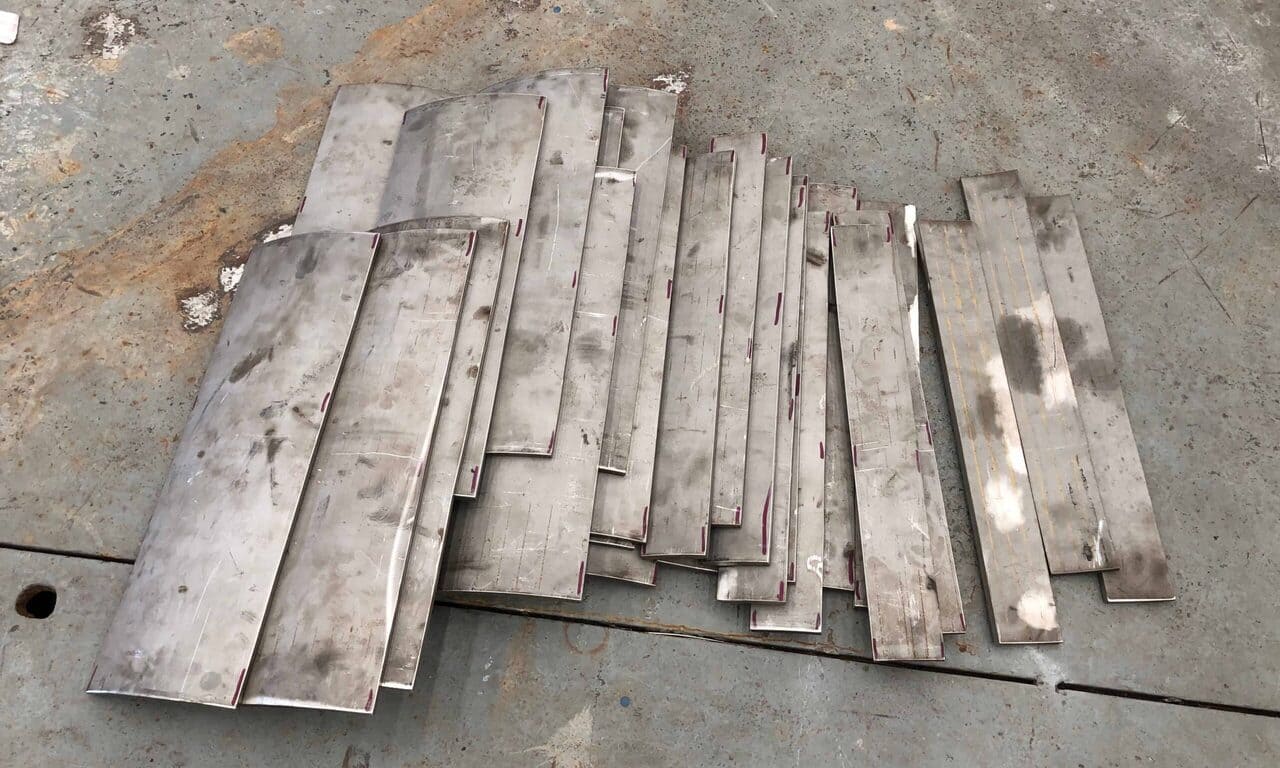If you’ve ever asked yourself, “What is a superalloy?” you’re in the right place. Superalloys are a class of metal alloys—including nickel-based alloys—whose properties for strength, corrosion resistance, and ability to resist mechanical deformation under elevated temperatures or stress for extended periods of time far exceed those of other metals like steel, stainless steels, and aluminum that are in common use. Nickel-based alloys are particularly noteworthy for their exceptional performance.
The specific qualifier for superalloys is that they retain their operational properties under a high fraction of their melting point. That definition is vague for everyday use, so the common—if unofficial—working definition of superalloys is a metal that doesn’t begin to lose its strength until it exceeds 1,000°F or around 540°C.
Overwhelmingly, superalloys are cobalt-based alloys, nickel-iron alloys, or nickel-based alloys that don’t begin to experience a loss of strength or surface softening until around 1,100°F (~600°C). These nickel-based alloys are designed to withstand the toughest conditions. The value of superalloys largely comes from their ability to provide strength under elevated temperatures and pressure, which is often enhanced through heat treatment processes. The inclusion of reactive alloying elements further improves their performance in demanding environments. Due to this, these superalloys have enabled engineering projects in high-temperature applications.
The most commonly known examples are gas turbine engines and turbine blades. Still, they also enable the manufacture of various exotic plastics, ceramics, and ceramic metals that can make lighter jet engine parts that are also resistant to high temperatures. The fracture toughness of superalloys is another key attribute, providing resistance to crack propagation and ensuring reliability in demanding applications. By maintaining their integrity at the average bulk metal temperature, superalloys ensure the reliability and efficiency of these advanced materials and components, such as advanced aircraft engines.
Additionally, their oxidation resistance significantly contributes to their longevity and performance in extreme environments. The manipulation of grain boundary energy also plays a crucial role in enhancing the mechanical properties and durability of superalloys under extreme conditions. Furthermore, their ability to withstand a high thermal gradient is essential for applications that involve rapid temperature changes, reducing the risk of thermal fatigue in critical components.
Why Do Superalloys Matter?
Superalloys matter because of their high-temperature resistance, high creep resistance, corrosion resistance, and environmental resistance. This opens up a range of options that wouldn’t be possible if such alloys didn’t exist. Either they wouldn’t be possible in the first place due to the extremely higher temperatures required, or the maintenance requirements to keep processing equipment operating under these extremes would be so high as to make them too costly.
Jet turbine engines, for example, can be built without superalloys. However, the specific chemical composition of superalloys allows them to resist heat for extended periods of time. Without this chemical composition, flight distances would be circumscribed to the point that transoceanic flights would require stops midway to avoid damaging the engine.
This sort of issue would apply to many of the following industrial applications:
- Turbocharging rotors used in performance cars and diesel engines
- Heat exchangers used in chemical processing and power generation
- Nuclear reactor vessels and steam generators that transfer thermal energy
- Turbine blades, shafts, and vanes in both thermal and nuclear power plants
There is a wide range of applications that we take for granted every day, and if not enabled by superalloys’ ability to resist heat, they are made much more reliable. This resistance to creep deformation and high temperatures is only one of the extraordinary properties of superalloys.
Superalloys also have extraordinary corrosion resistance, which can be further improved with appropriate high-temperature applications. This drives a greater demand for nickel-based superalloys in marine applications, the petrochemical industry, chemical manufacturing, and medical devices like implants and stents. Additionally, their use in gas turbines enhances performance and efficiency by maintaining the maximum use temperature.
However, medical devices do not typically use the same formulations as the superalloys used in heavy industry. The drawbacks to these superalloys, which counterbalance the benefits of unique properties, are that they are very expensive and challenging to work with.
Despite this, their advantages make them indispensable in critical applications such as gas turbines and other high-stress environments. Furthermore, increasing turbine inlet temperatures in these engines improves efficiency and power output, showcasing the essential role of superalloys in modern engineering.
|
Buy Certified High-Quality Metals for Industrial Solutions |
||
|
New Aluminum |
New Steel |
New Stainless Steel |
 |
 |
 |
| Reliable supply: Consistent, certified aluminum stock you can trust. High-quality material: Superior-grade aluminum for precision needs. Custom cuts: Accurate cuts down to thousandths of an inch. |
Durability and strength: Reliable for projects needing long-lasting, tough materials. Cost-effective: Quality steel that offers strength without breaking the bank. Custom cutting: Precise cuts tailored to exact needs with top-tier cutting tools. |
Sustainability: Highly eco-friendly as the most recyclable metal on earth. High durability: Resistant to corrosion and wear, ensuring long-lasting performance. Custom precision cuts: Tailored to your specifications with quick, accurate results. |
New Superalloys Compared to Remnants
Copper-nickel, nickel-iron, and nickel-based superalloys such as Inconel, Hastelloy, and Monel are very pricey. The expense of nickel-based superalloys is significant enough that welding parameters for lining stainless or mild steels with a layer of Inconel, Hastelloy, or Monel are well-developed and common practice.
The alloy development process often requires precise high-temperature applications for optimal results, highlighting the value of superalloys in industrial applications. They are often more well-developed than metal-cutting methods for superalloys. In other words, paying a skilled laborer to spend hours lining a piece of mild steel with welded beads of superalloy is more economical than buying a plate of superalloys outright. Typically, superalloys are only economical to use when literally nothing else will meet the requirements. This somewhat limits the use of the structural material for all intents and purposes.
A potential exception to the incredible expense of these superalloys may be the use of verified remnants. These pieces are left over after other industrial processes take what they need from standardized-sized plates or bar stock. They are the same as new metal but come in non-standard sizes. The only real difference is that the typical certifications cannot be applied, so remnant metals aren’t suitable for applications in heavily regulated industries, such as the aerospace industry. The solid solution strengthening in these remnants is identical to new materials, ensuring their reliability in less regulated applications.
On the other hand, a custom superalloy drive shaft can deal with the high torque from an electric motor in a prototype piece of equipment or electric vehicle, and a custom machined manifold for corrosive fluids or gas can also be an incredible benefit.
The use of remnant Inconel, Hastelloy, and Monel in applications where the costs would generally be far too high opens up many potential benefits. Given that superalloys have opened up incredible new options just by existing, the potential of obtaining and using them in applications where they normally wouldn’t be used is hard to overstate.
The solid solution hardening in these alloys is critical in their high-temperature performance and durability. At the same time, the integrity of their grain boundaries ensures their continued reliability under stress. Furthermore, the unique crystal structure of superalloys contributes to their exceptional mechanical properties and resistance to deformation under extreme conditions.
Industrial Metal Service is a nationwide supplier of precision-sawn aluminum and other specialty metals. We maintain a large inventory of specialty metal remnants, including superalloys like Monel, Inconel, and Hastelloy. If you’re looking for superalloys, call us at (408) 294-2334 to find out what is in stock or request a quote.
 Angle
Angle Cast Plate
Cast Plate Diamond Plate
Diamond Plate Flat Bar
Flat Bar Plate
Plate Round Bar
Round Bar Square Bar
Square Bar Square Tubing
Square Tubing Round Tubing
Round Tubing Angle
Angle Channel
Channel Diamond Plate
Diamond Plate I Beam
I Beam Round Bar
Round Bar Sheet
Sheet Square tubing
Square tubing Round Tubing
Round Tubing Rectangular Tubing
Rectangular Tubing Plate
Plate Rectangular Bar
Rectangular Bar Rectangular Tubing
Rectangular Tubing Round Bar
Round Bar Sheet
Sheet Square Bar
Square Bar Square Tubing
Square Tubing
